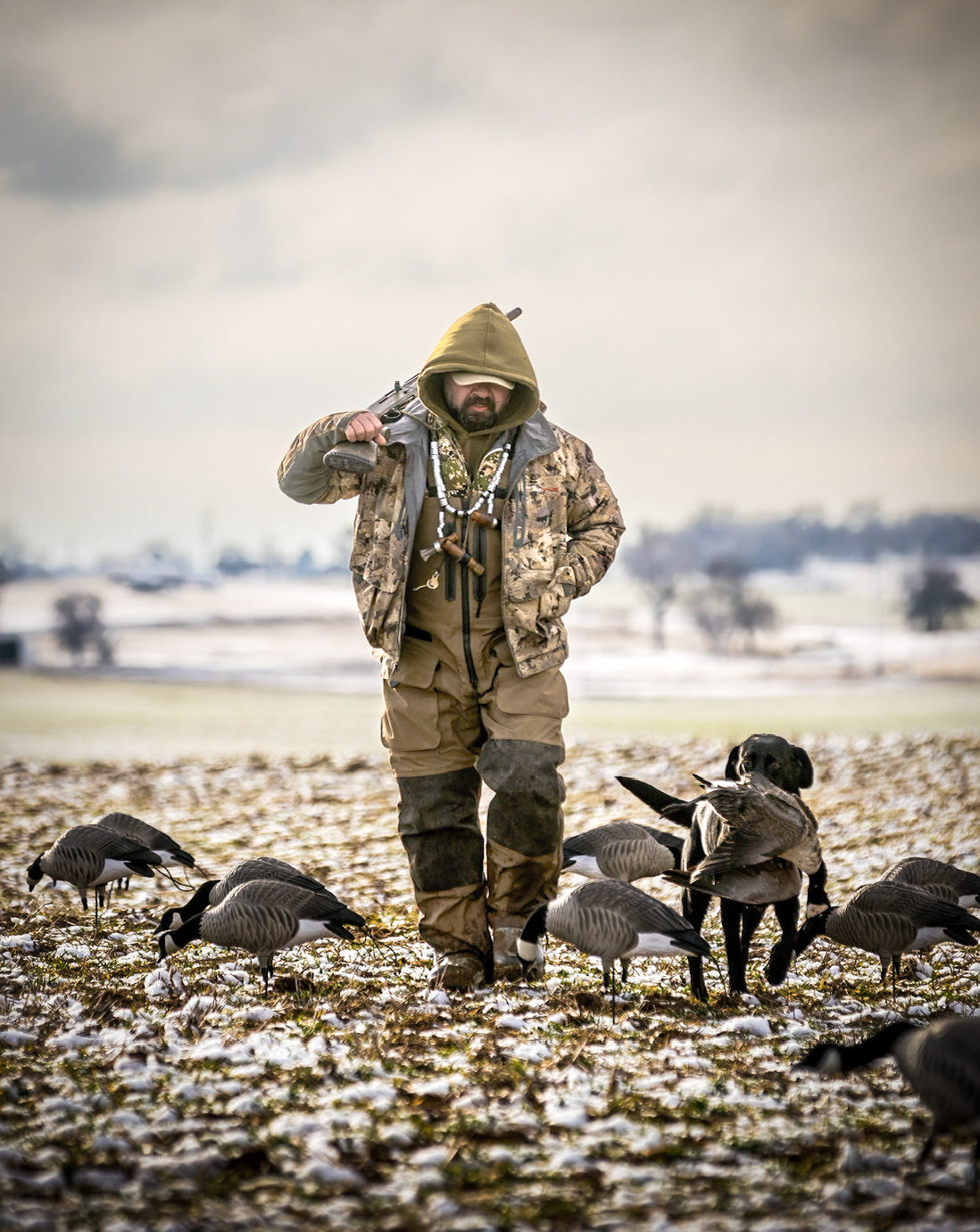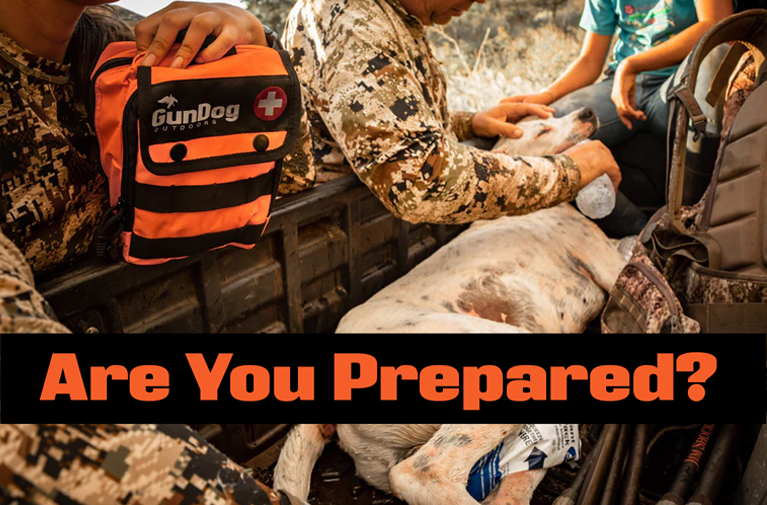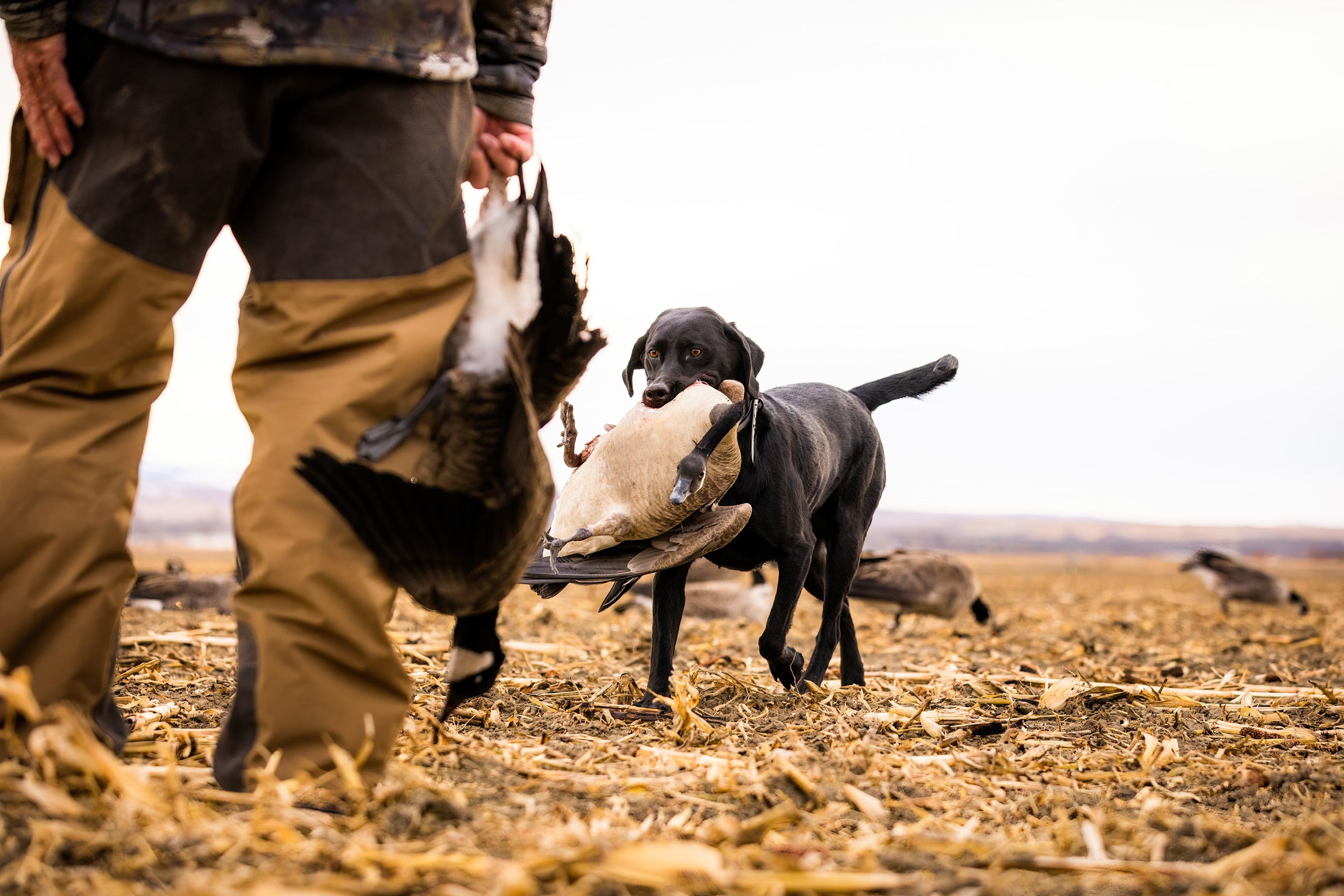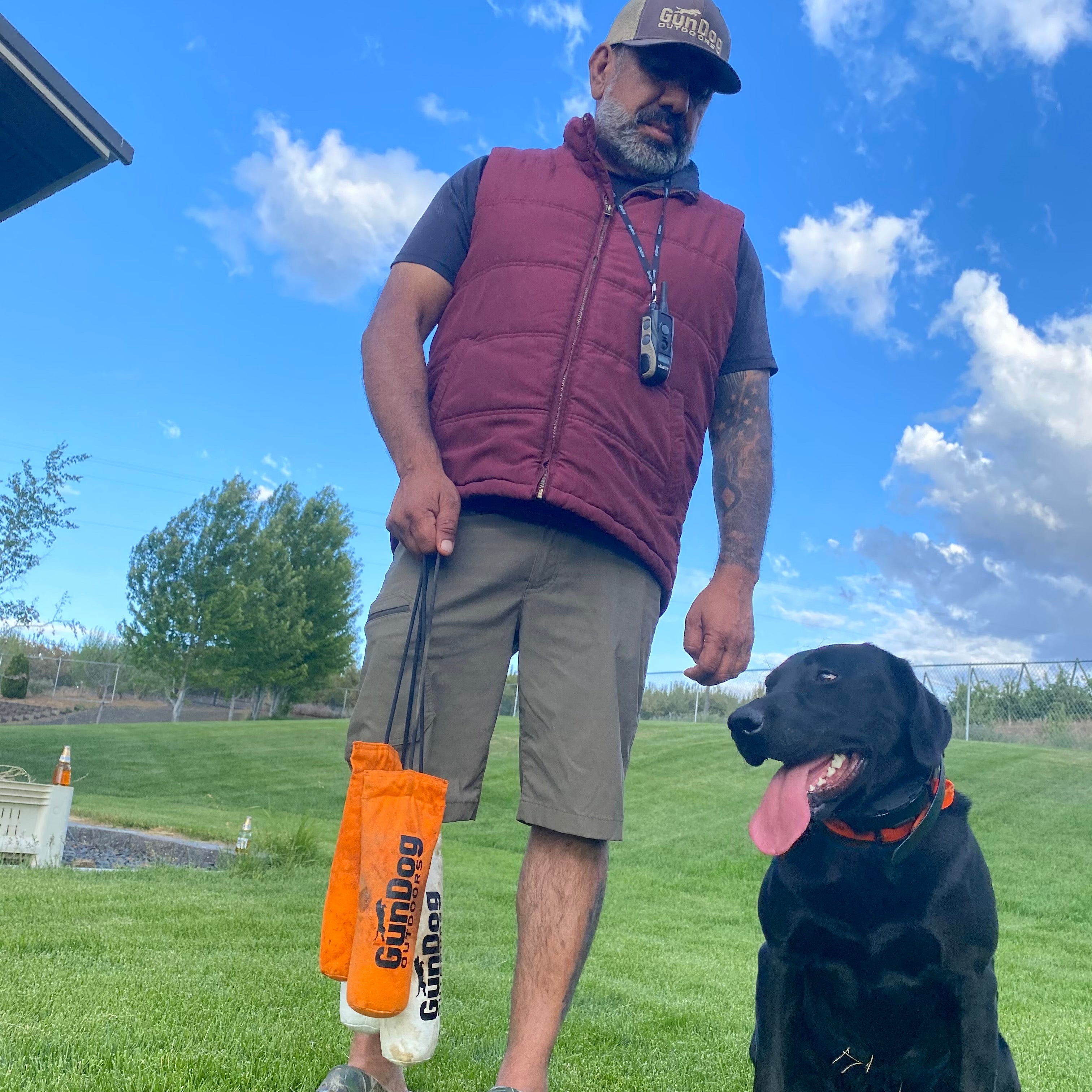Identifying and treating hypothermia and cold weather emergencies in gun dogs

Hypothermia is a medical emergency that occurs when your body loses heat faster than it can produce heat, causing a dangerously low body temperature. Normal body temperature for a dog is around 100.5-102.5°F or 38-39.2°C Hypothermia occurs when a dogs body temperature falls below 98˚F or 99˚F (37°C).
When the body temperature drops, the heart, nervous system and other organs can't work normally. Left untreated, hypothermia can lead to complete failure of the heart and respiratory system and eventually to death.
Hypothermia is often caused by exposure to cold weather or immersion in cold water. Primary treatments for hypothermia are methods to warm the body back to a normal temperature.
Initially, a dog’s body responds to hypothermia by narrowing blood vessels near the surface to send blood away from the skin, legs, ears, feet, etc., and towards essential organs like the brain and the heart.
Signs/symptoms of mild to moderate hypothermia in dogs include:
-
Excessive shivering
-
Muscle stiffness
-
Lethargy
-
Difficulty walking
-
Pale gums
-
Cool body surfaces
-
Confusion
As hypothermia worsens, dogs will:
-
Stop shivering
-
Collapse
-
Have fixed and dilated pupils
-
Develop slow and irregular heart and breathing rates
-
Become comatose
-
Potentially die
Mild Hypothermia
At this point, you may notice that a hypothermic dog’s extremities (ears, legs, feet, paws) appear somewhat pale and feel cool to the touch. While this physiological response can certainly help a dog survive, it does increase the risk that they’ll suffer from frostbite as time goes on.
Look for:
-
Cold areas of the body, especially the extremities (ears, legs, feet, paws)
Moderate Hypothermia
To generate extra heat, a dog with mild to moderate hypothermia will shiver, and their muscles will become tense. This muscular activity produces warmth, but it can also make a dog’s movements stiff and clumsy.
At this point, a hypothermic dog may become sluggish and seem confused.
Look for:
-
Shivering
-
Stiff or clumsy movements; difficulty walking
-
Sluggishness
-
Seeming confused
-
Pale gums
Severe Hypothermia
As severe hypothermia sets in, a dog will stop shivering because their muscle cells have run out of energy.
Once shivering stops, the dog’s body temperature may begin to rapidly drop.
The chemical reactions that are necessary for normal body functioning in a dog will slow down or stop altogether. The dog’s heart rate slows and becomes erratic, and their breathing slows. As oxygen levels drop in the bloodstream, the dog will become increasingly lethargic and unresponsive.
Eventually shock, organ failure, coma, and death will follow.
Look for:
-
Shivering that has stopped
-
Rapid drop in body temperature
-
Slower breathing
-
Collapsing
-
Lethargic and/or unresponsive
-
Fixed and dilated pupils
Treatment for Dog Hypothermia
Dogs with hypothermia need to be rewarmed, but the process should occur gradually. Think “warm,” not “hot.”
Do not use a heating pad, as it gives off excessive heat that can lead to burns, or it can direct too much blood flow towards the skin, which can worsen shock.
How to Slowly Warm a Hypothermic Dog
Here’s what to do if your dog has hypothermia:
-
Get your dog into a warm building or vehicle.
-
Wrap them in blankets, towels, coats, etc. If you can, warm up some blankets on a radiator, in a clothes dryer, or using a hairdryer.
-
Place bottles of warm water/hot pack next to your dog, but always keep a couple layers of fabric between the bottle/pack and your dog’s skin.
-
Get to the nearest veterinary office immediately
Prevention of Hypothermia
Here's how to prevent hypothermia:
- Get a good fitting vest. It is important that the vest is tight around the chest and stomach area. This is where the vitals of a dog are. A loose vests allow for heat to escape more easily.
- Bring and use a portable heater for your dog. A portable heater can literally save a dog's life if it begins to go into hypothermia or shows signs of hypothermia.
- Make sure you dog has eaten. Food is warmth. Give your dog treats throughout the hunt.
- Monitor your dog continuously. If you dog starts to show signs or symptoms begin treatment or prevention. If your dog doesn't want to get into the water, don't make it.








3 comments
Hello gundogoutdoors.com webmaster, Your posts are always well-supported and evidence-based.
This happened to us last weekend in -3F and 35mph wind condition duck hunt. Fortunately we had propane heaters in my boat blind and that helped. Curious Alex—on the vest—which would you say is the “best” or warmest vest? I think Mac’s is 5mm neoprene but I wonder what you would say about recommendations. Thanks brother.
Kevin
This happened to us last weekend in -3F and 35mph wind condition duck hunt. Fortunately we had propane heaters in my boat blind and that helped. Curious Alex—on the vest—which would you say is the “best” or warmest vest? I think Mac’s is 5mm neoprene but I wonder what you would say about recommendations. Thanks brother.
Kevin